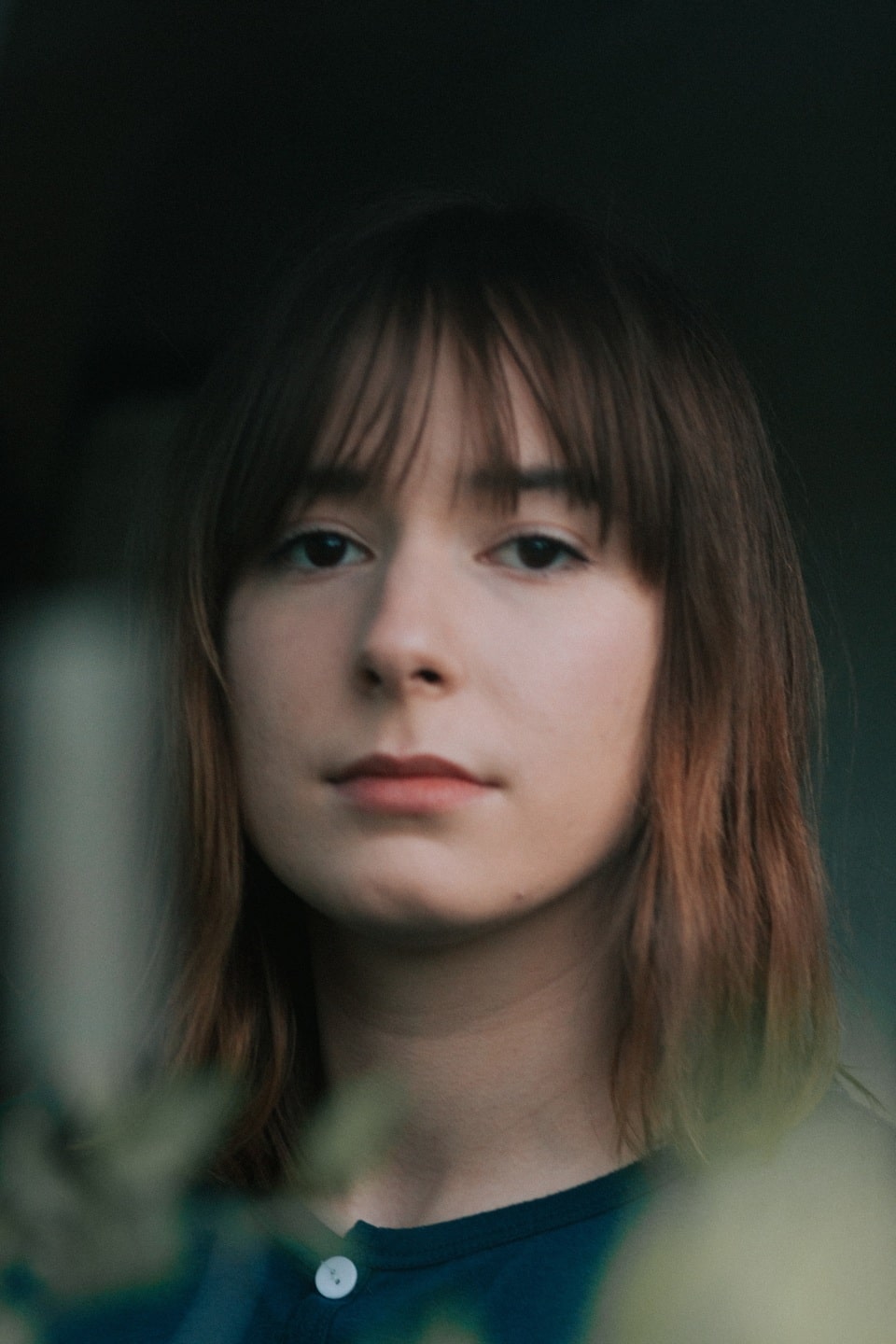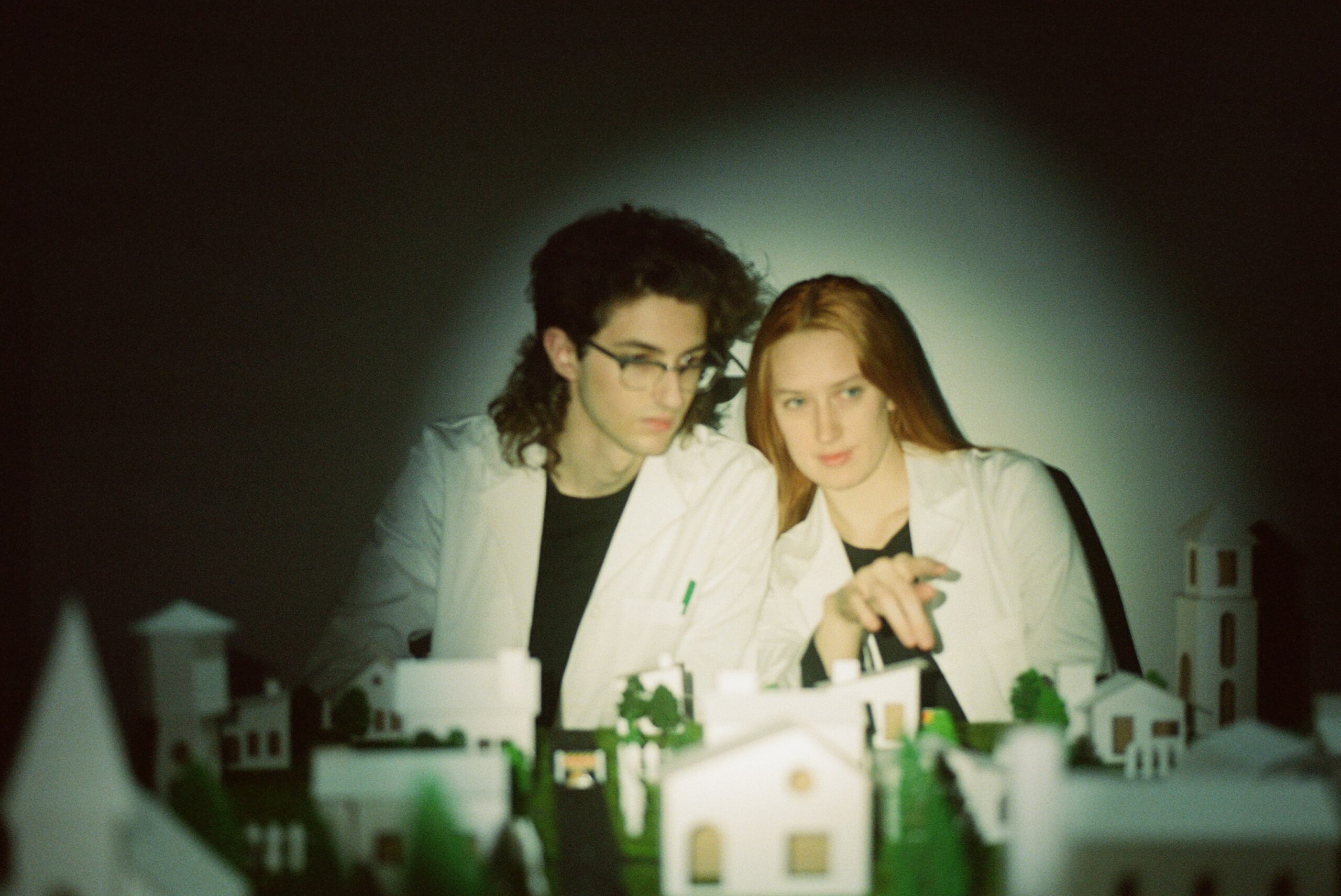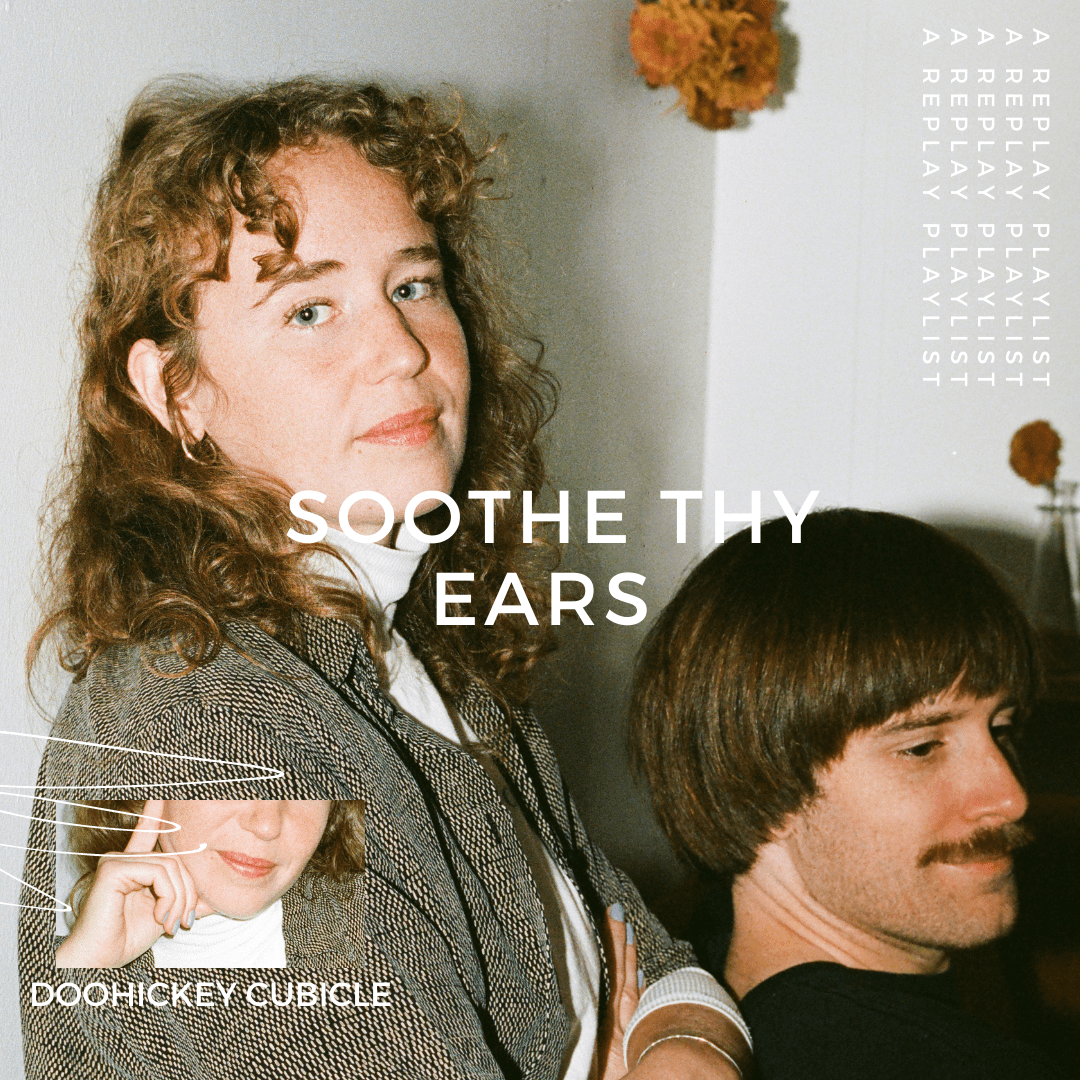When TC Superstar took the floor at a packed Washington, DC house show last November, the crowd did their best to back up – they didn’t want to get hit. Part music, part performance, the Austin pop collective includes four professional dancers that tour in shifts alongside the group’s musicians. With every selection played that evening, Emily DiFranco and Yuriko Roby moved through their choreography in that tiny DC living room seamlessly and faultlessly in sync, and never reluctant to expand outward to reclaim the floor from listeners who shuffled too far forward.
In the weeks following their fall tour, we spoke to the members of TC Superstar responsible for crafting their signature choreography: LB, Francis, Emily, and Yuriko. We discussed their backgrounds, creative processes, and experiences touring. Additionally, the five of us discussed what it’s like to create room for oneself, not only literally within a physical show space, but within the music industry as well, a scene not particularly accustomed to welcoming contemporary dance in DIY spaces.
Slumber: You all have quite a bit of training in dance, yes? Could you tell me a bit about all of your backgrounds and influences? What types of dance are you all trained in?
LB Flett: I started dancing when I was three. I had a pretty intense ballet training, and I took it very seriously. I also trained in jazz, contemporary, tap… the basic dance studio training. Did lots of competitions, stuff like that. Then I studied dance in college which allowed me to branch out from ballet, study other forms of dance, and explore my own choreography.
Francis Rodriguez: I started formal dance classes at the age of three. I primarily studied ballet but also took classes in jazz, tap, folklorico, and flamenco. I later went on to study dance at The University of Texas at Austin and spent a semester abroad studying contemporary dance in Angers, France. In college, I was able to explore contemporary dance and choreography practices, and also hone in on my educational skills as I was a part of the teacher training track (UTeach Dance) at UT Austin.
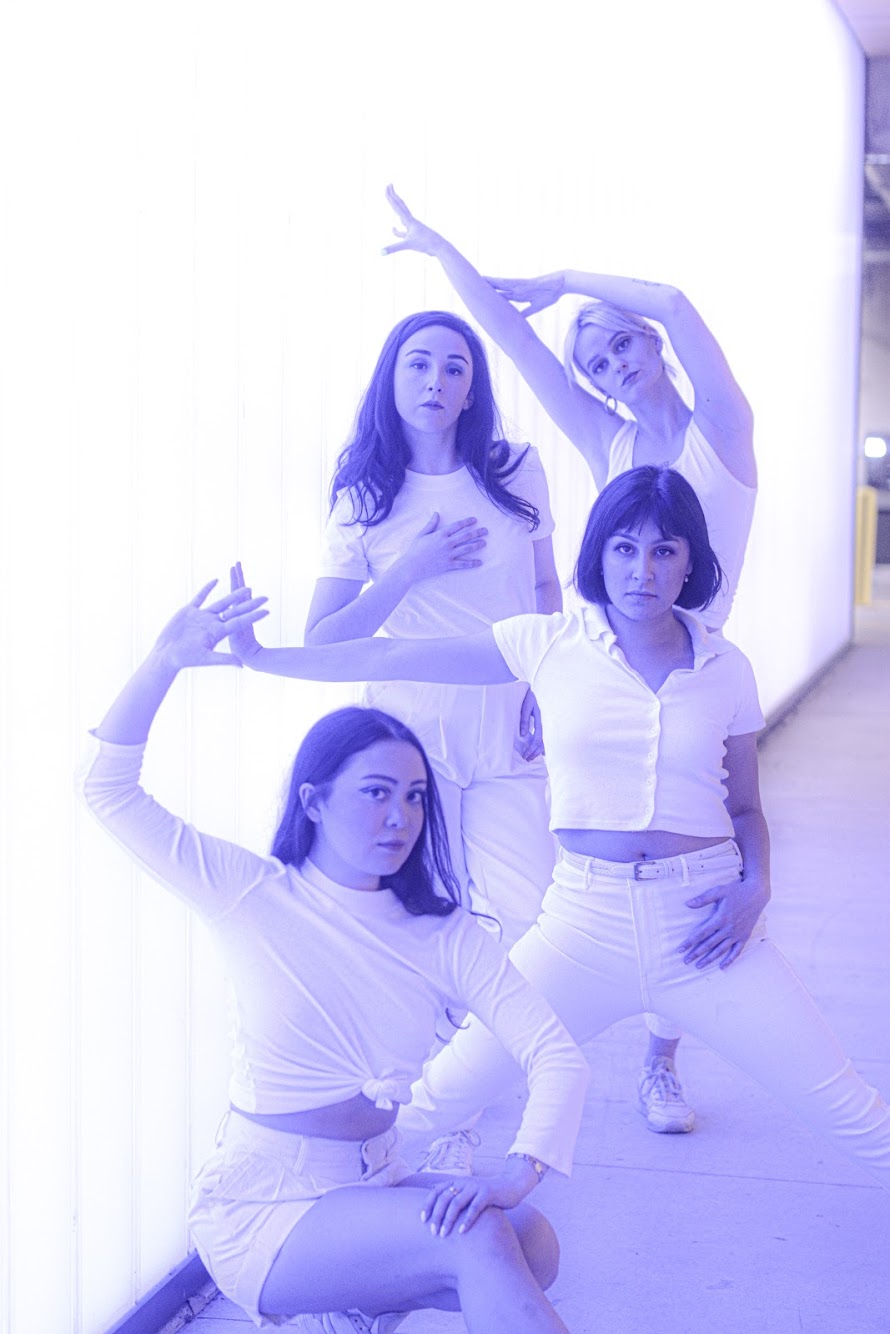
Emily DiFranco: I began dancing when I was three at my local dance studio. It was mostly recreational but I attended some dance competitions and performed in many recitals. After high school, I danced in community college for 3 years where I refined my modern and ballet technique and learned about dance as art in higher education. I then transferred to UT Austin where I was able to spend almost all of my time focusing on dance. I took contemporary, ballet, pilates, and choreography. I also had the opportunity to work with professional choreographers who really pushed me.
Yuriko Roby: I started out in classical ballet. I was a total bunhead and would spend every summer at ballet intensives. It was pretty intense. It wasn’t until high school that I branched out into contemporary, jazz, and even a little hip hop. It was eye-opening and I realized there was so much more to dance. In college, the program had a strong contemporary focus, along with many other dance forms which really helped influence TC choreography.
“We bring contemporary dance into spaces that are not traditionally made for it, and I think that is very fitting for the city and dance community.”
Slumber: How did you all get involved with the project? And, how did dance become such a major component of the collective?
LB: Connor (our frontman) approached me nearly three years ago with this whole idea. He had an album and he knew he wanted it to be a performance — dancing, costumes, audience interaction, the whole thing. So dancing has always been at the forefront. I agreed to help him with the choreography part and then recruited Emily, Francis, and later on Riko. We were all in the same college dance program so we all kind of spoke the same language.
Slumber: Is there a large community for dance in Austin? How has the city either cultivated your interest and practice in dance?
Francis: The dance community in Austin is small, but places a large emphasis on creating new works and cross-collaborations with other arts practitioners. That’s why I think TC does so well in Austin. When LB was approached to collaborate with a pop performing musician, there was no question of whether or not she could go for it because at UT and in Austin it’s encouraged to try new things and explore different avenues of making art. We bring contemporary dance into spaces that are not traditionally made for it, and I think that is very fitting for the city and dance community.
Slumber: Additionally, you have held dance clinics in Austin — what’s been the reasoning and inspiration for those?
Francis: We want our live sets to get people moving, and these classes are an extension of that. Most of the people who attend our classes have never taken dance classes before and that is what’s so special. People see our set, want to dance more, and then come to a class to groove and have fun.
LB: Honestly, we were in a tough spot financially and we needed new, creative ways to make money to stay afloat. So that’s where the idea to host classes came from. We’ve been doing it for a year and it’s been such a beautiful way to connect with people in our community. My heart is so full after every class we do.
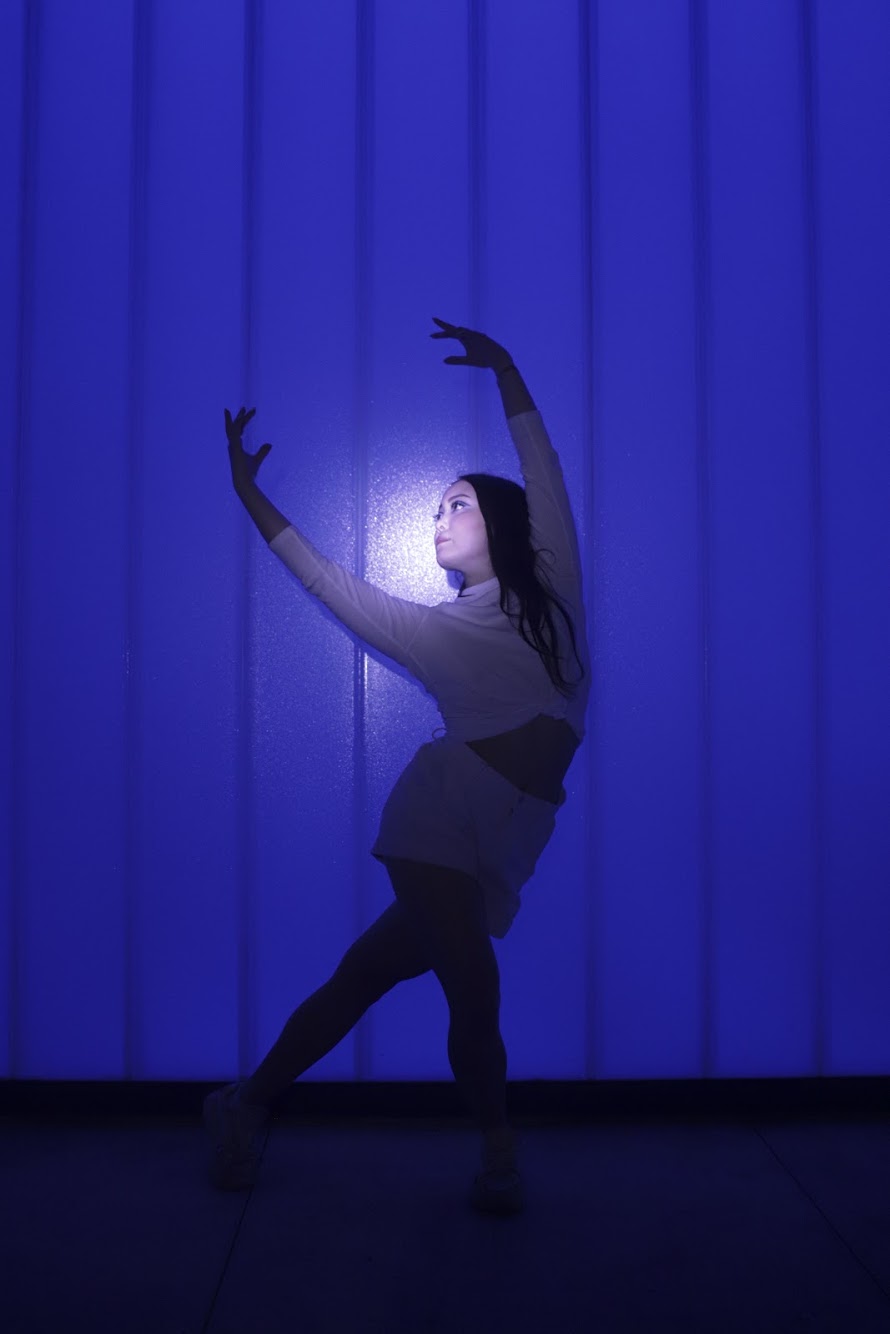
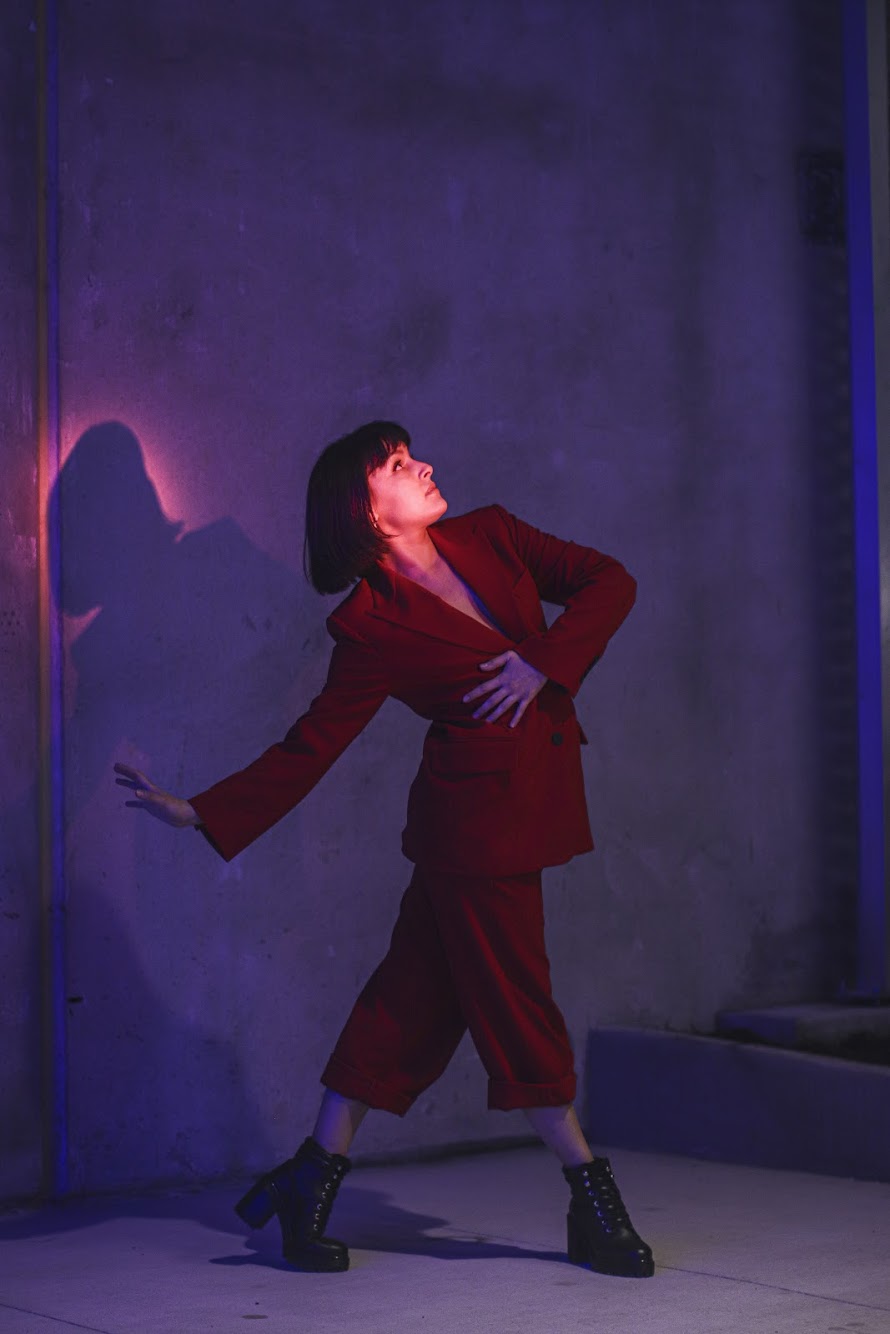
Yuriko Roby (left) and Emily DiFranco (right)
Slumber: Can you walk me through the process of how you generally choreograph? Do you work on it as the song is being written and produced or is it a post-recording process?
Emily: Typically we start choreography once the music is either complete or in its final draft. The dancers will come together and listen to the music, noting what comes to mind or if a specific song sparks our interest. We try to divide choreographic responsibilities evenly. We can decide to all work together, in a pair or alone. These different groupings help us keep the choreography fresh and helps prevent burnout.
The dances that Francis and I create together are different from what LB and I make together and that’s different from what I would do alone but, it still always ends up looking like TC no matter the grouping. Choreographers will then come together to decide on the intention or specific ideas we have for the movement. We hold weekly rehearsals to teach each other what we’ve made. Later on, we will spend rehearsal time cleaning and refining.
Slumber: TC Superstar is a very visual collective in regard to your color palettes (pink for R&D or teal for Masc), album/promo design, etc. Do these visual aspects of the collective influence your choreography?
LB: I think they sometimes do in a more abstract way. Julio, our designer and guitarist, creates these images and we are all involved in that process. The pink for R&D was always very intentional and I think adds to the whole young romance theme. In our choreography, we try to compliment that.
Slumber: Touring and live performances are where you all get to really showcase the work you all do. How do you decide who tours? And additionally, is your choreography heavily affected by the idea of touring? A lot of DIY spaces are small, so do you have to modify your routines based on who is traveling and the space?
Yuriko: We decide who tours mainly based on availability. Some of our jobs are more or less lenient when it comes to taking two to three (or even six!) weeks off at a time. Thankfully it’s worked out where at least two dancers are able to tour at a time. Touring is very interesting when it comes to the variety of venues and stages we perform on. Most of the places we perform really aren’t intended for full-on dancing. The spaces can be extremely small with weird floors and people standing six inches away from you. We are constantly adapting and trying our best to make it work. Even if the stage isn’t ideal, all we hope is that the crowd brings good energy which really helps us forget about the small space we’re in.
LB: Touring is actually so difficult when you’re a DIY band with dancers. People have no idea what to do with us when we try to explain it. Like yeah, we need more space and we need to move your rug. A lot of the environments we are in are male-dominated, which makes demanding space that much harder. Men tend to take up space with surprising ease, I’ve learned.
“This project doesn’t make sense without dance... every second of the choreography has an intention and a reason why we do it. It’s just not meant to only be heard, we always wanted a fully involved experience.”
Slumber: Let’s talk about R&D in particular. As an album, more clearly than your last collections, comes entwined with a story arc of a relationship conveyed by spoken word portions. Did this narrative influence your choreography?
Emily: I feel like we gave ourselves a lot of freedom choreographing R&D. I listened to the songs, daydreamed a little bit, and noted the feelings/textures/vibes the song gave me and tried to make movement that reflected that. I think every dance has moments of lyrical and musical influence. We’ve never been too strict about staying within the narrative Connor creates but we absolutely aim to complement it.
LB: Some songs very clearly reflect the narrative, like Dana Be Mine. The choreography is very lovey-dovey with some partner work and kind of flirty movements. But some choreography is influenced by just the music rather than the narrative.
Slumber: What was your each of your favorite songs on R&D to choreograph and why?
LB: Probably “Ricky Ruin Me”. We’ve only ever performed it once, but I got to explore some partnering-contact stuff which was fun. The song itself is really emotional too so I kind of experienced some catharsis in the process and in the performance.
Emily: Choreographing “Into You” was a really lovely experience for me. I originally choreographed the song for the music video and later adapted it for live performance. I was able to make something that was completely my movement style. Looking back on it now I would do some things differently, but I really appreciate the experience for everything I learned from it.
Yuriko: “Something Real” was surprisingly my favorite to choreograph. It was later in the process and we were pretty tight on time. We decided to go around the room and each choreograph two to three 8-counts. It was pretty impromptu and not the typical way we choreograph but it ended up working out well. Everyone was involved. It allowed us to feed off each other’s energy and connect with the other person’s choreography before and after your own. It was kind of like stitching a quilt together, and thankfully it came together in the end.
Francis: For “One and Only”, I co-choreographed with Emily and that was my favorite experience. Choreographing on my own, I get way too caught up in my head. Working with another person, especially Emily, I get to just generate movement, and then her and I can collaborate to sculpt a more refined vision of what we want. It’s my favorite dance to perform.
Slumber: Have you begun choreographing for the next album? How do you approaching new material compared to previous releases?
Emily: I’m learning that every album is going to have a very different timeline. As of January 2020, we have not begun choreographing for the new album. This time around we’re trying to really cultivate WHAT we are aiming to create before we dive in. It’s important for us to convey this message carefully so we’re spending more time giving feedback on the music while it’s still in production and having meetings about our influences and how they relate to where we are and where we want to go.
Francis: Following what Emily said, I see us researching themes much more intently at this current stage of our process and think this will definitely influence what we make in a different way than before. I’m excited to see how we push our own boundaries.
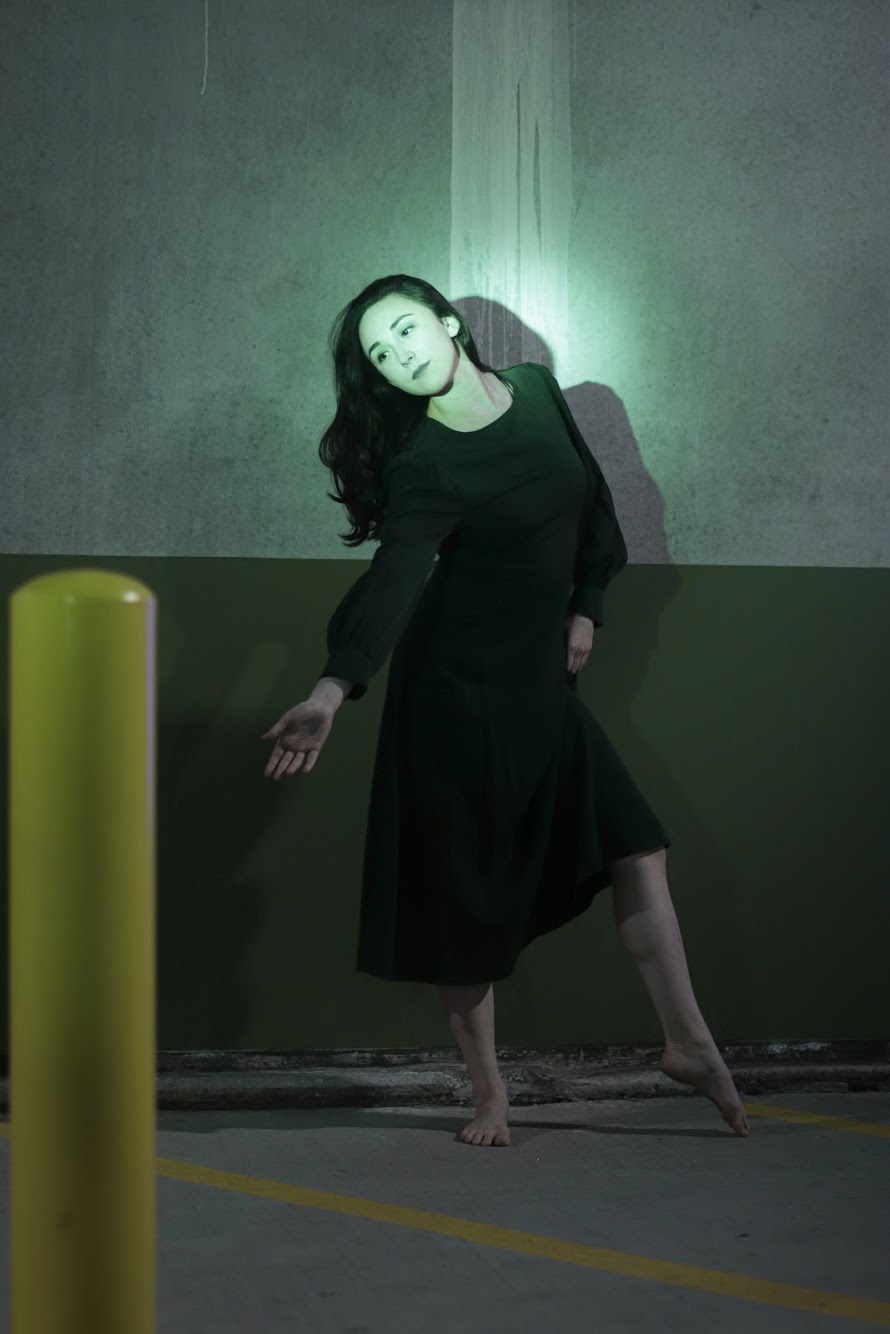
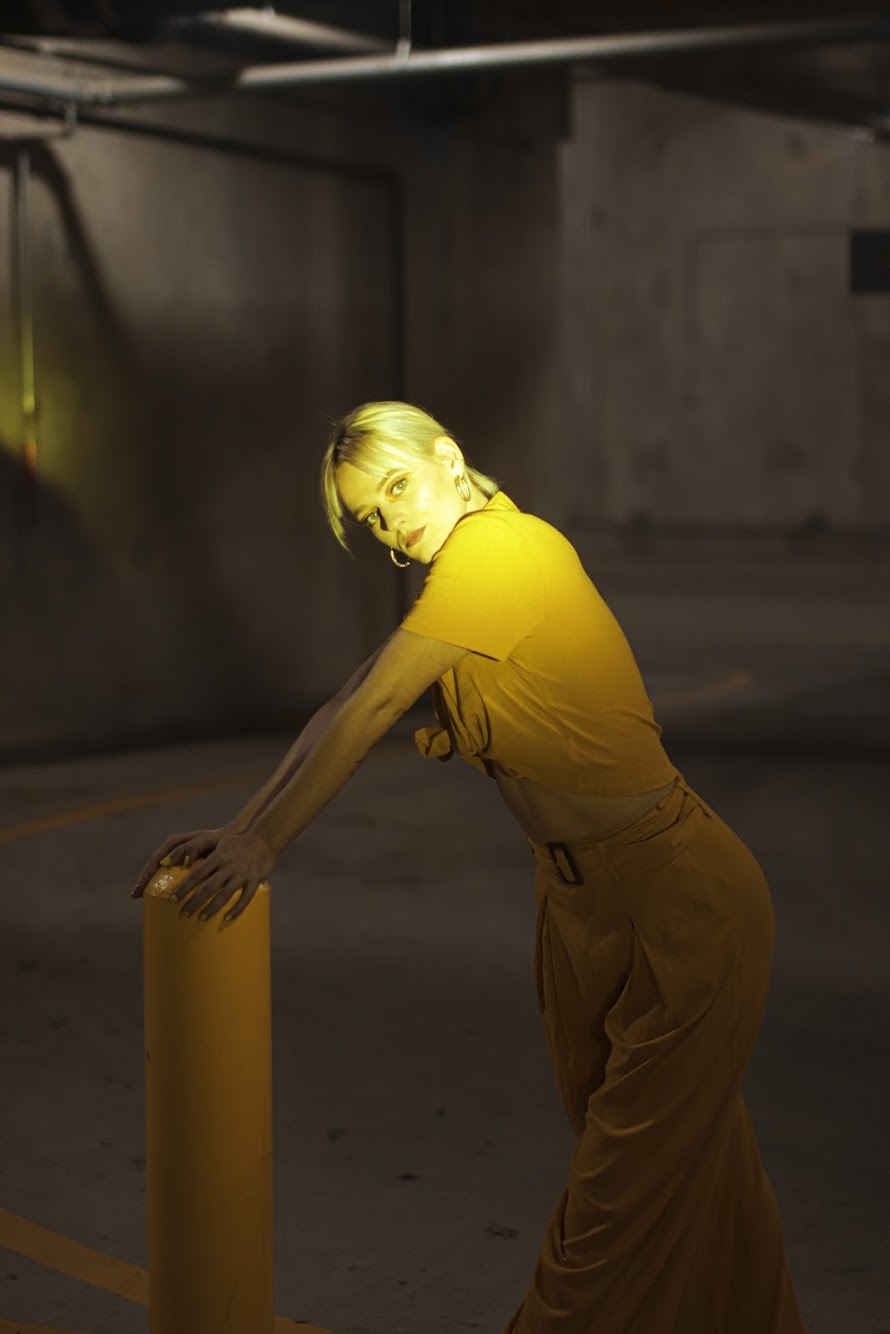
Francis Rodriguez (left) and LB Flett (right)
Slumber: What do you think dance does for the music and how may it change, modify, or add to the overall art? What’s the importance to you of using dance in this project?
LB: This project doesn’t make sense without dance, in my opinion. Every second of the choreography has an intention and a reason why we do it. It’s just not meant to only be heard, we always wanted a fully involved experience. And what’s more fully involved than using your whole entire body to express something?
Slumber: What do you hope your audience members gain, feel, or learn getting to experience dance in addition to the music when they see you all perform?
Yuriko: We hope they experience something more than just seeing a band play music. Dance and music go hand in hand in TC Superstar. The music makes the dance and the dance makes the music. We want people to have a full-body reaction to the performance and feel inspired to dance and groove themselves. Dance is for everyone, whether it’s bobbing your head or full-on twerking. We hope they can channel that energy at our shows.
Slumber: More generally what have you learned from this overall experience? Either about yourselves, your team, life, dance — anything at all?
LB: Wow, so much. I’ve learned that making art, in general, takes a lot of generosity and honesty. There are lots of highs and LOTS of lows.
Emily: I’ve learned that pursuing art takes a lot of faith. You have to know why you are doing it. Success is never guaranteed, no matter how talented you are or how hard you work. Because of this, I think it’s really important for me to find pleasure in the process and to be grateful for every moment I have creating and performing with this incredible group of individuals.
Slumber: If a movie was being made about TC Superstar and you could cast the person playing yourself, what is the group’s new lineup?
Francis: I want Emma Watson to play me.
Emily: I want the guy, the hot one, from American Horror Story. What’s his name? Evan Peters.
LB: I would probably be played by Jemima Kirke.
Yuriko: Coco Princess @coco_pinkprincess.
Listen to TC Superstar below and pick up their recent album R&D out now.
